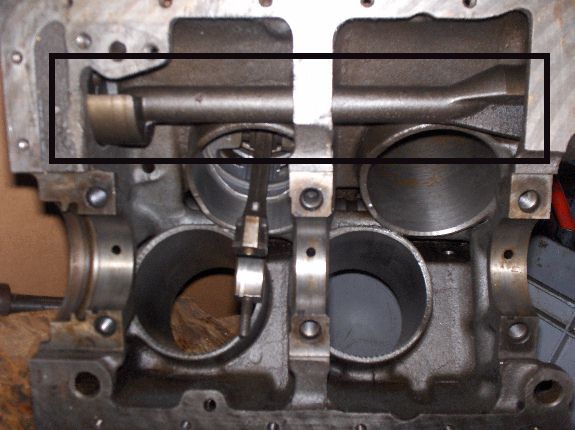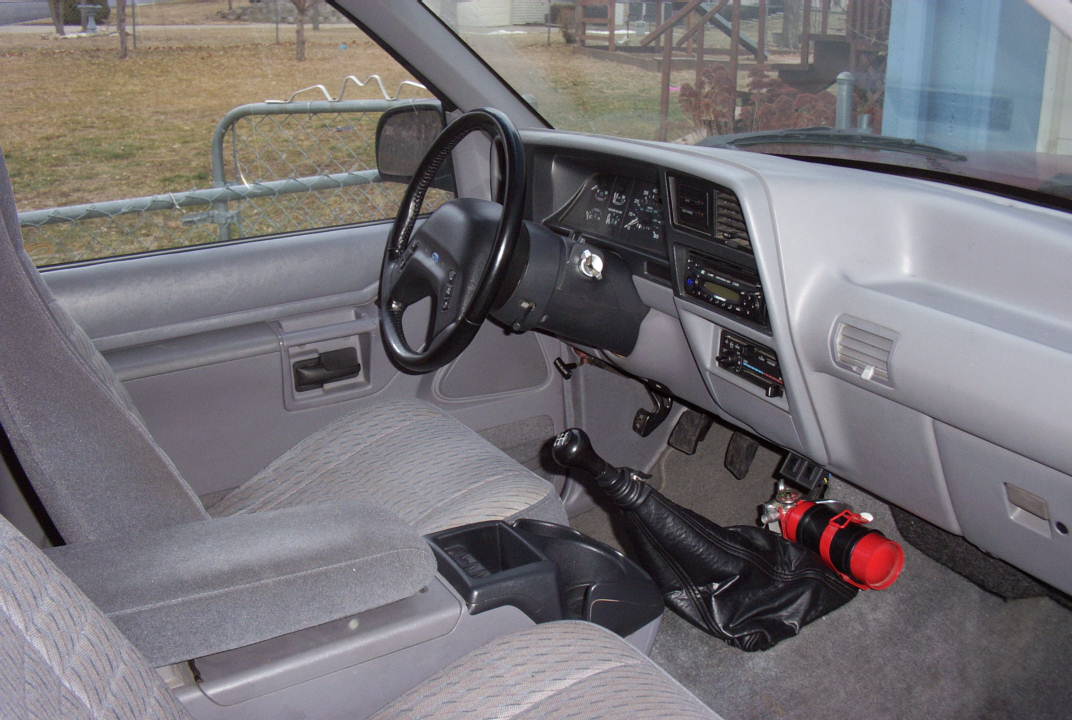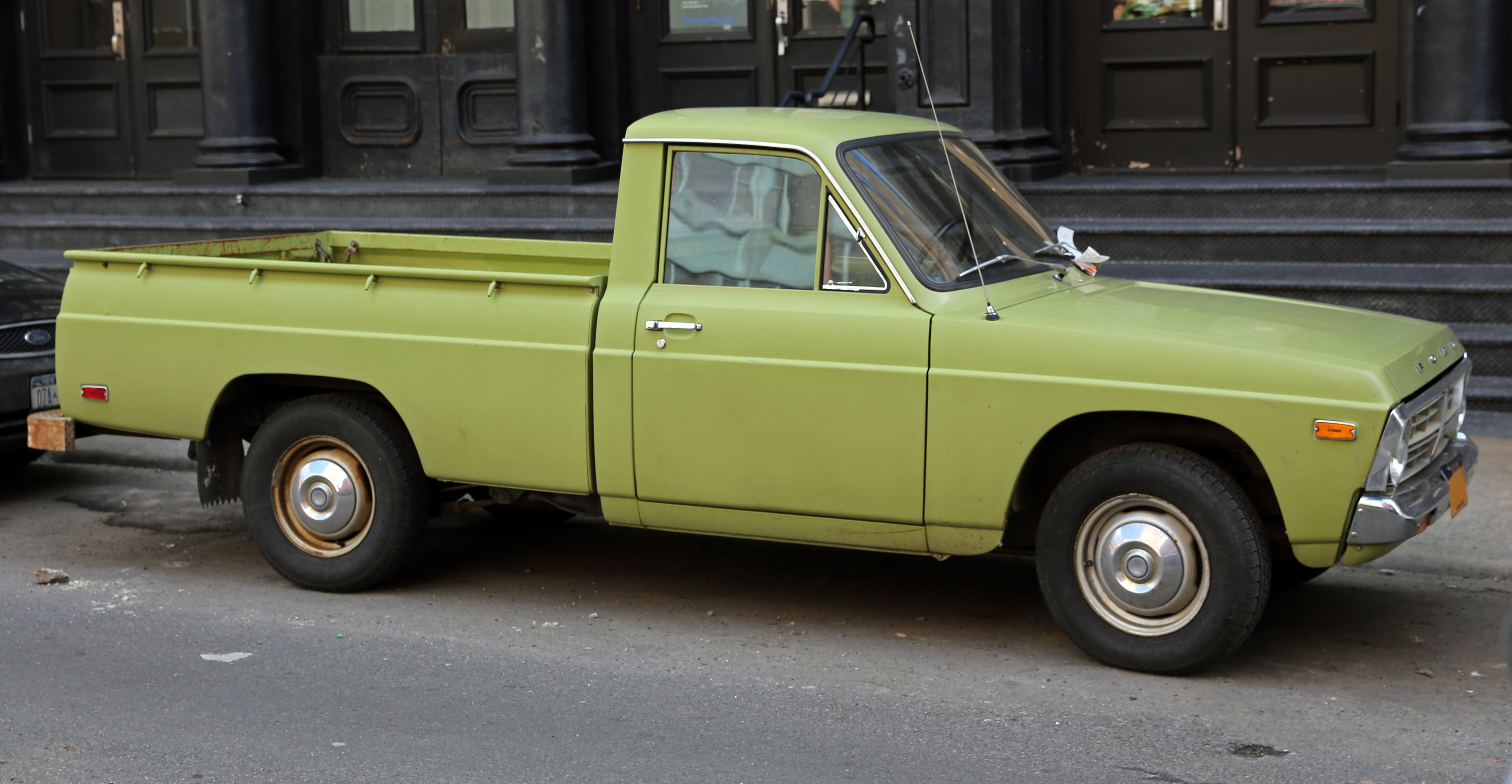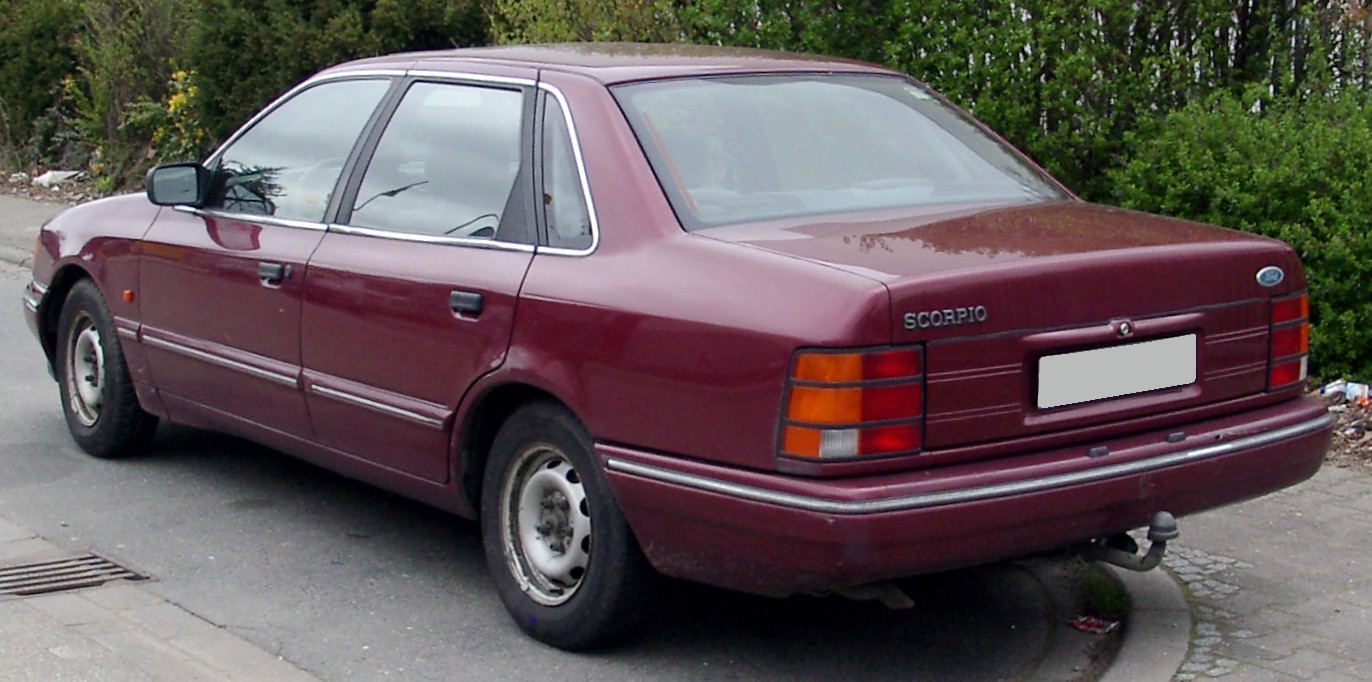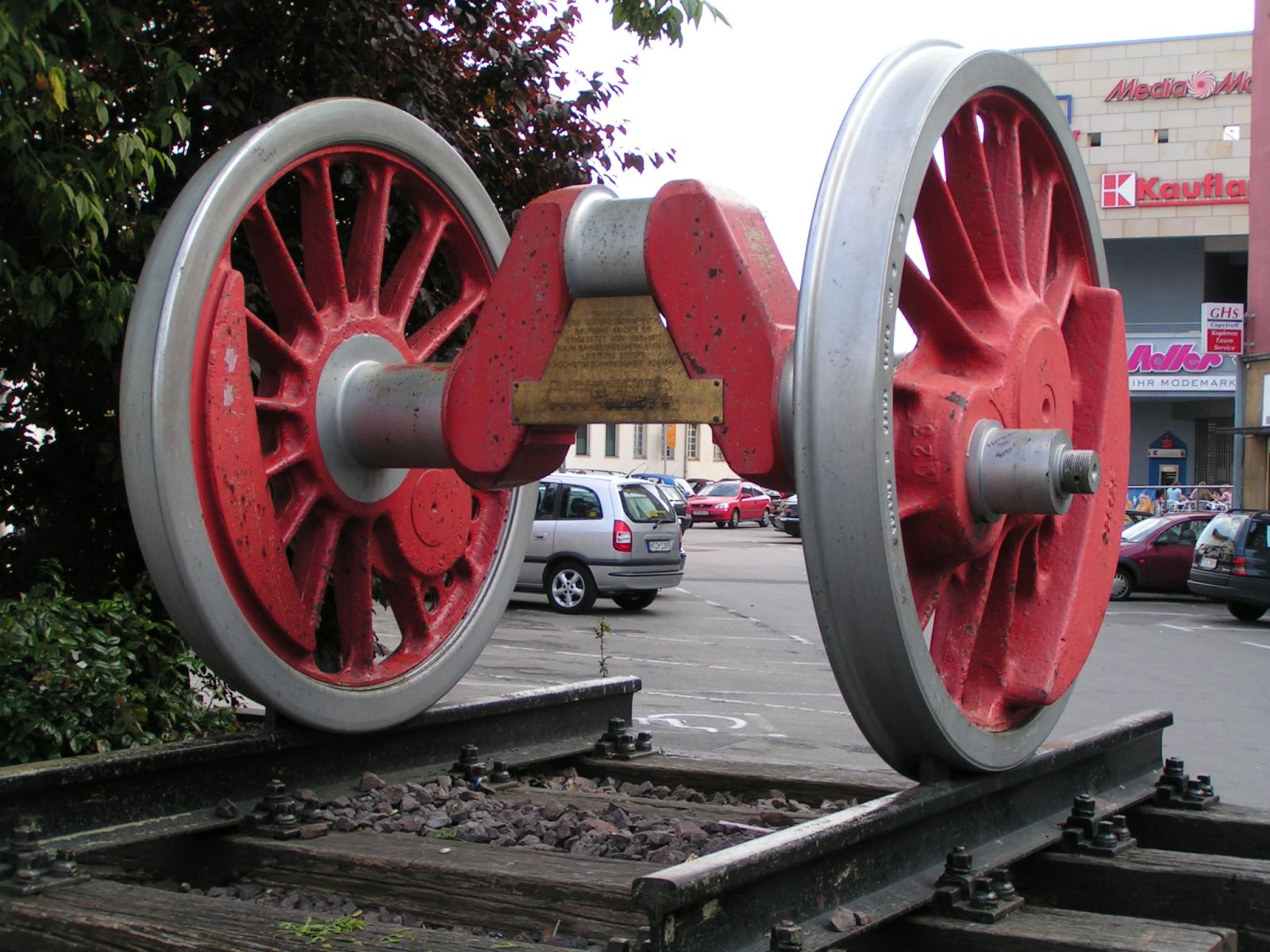|
Ford Taunus V4 Engine
The Ford Taunus V4 engine is a 60° V4 (engine), V4 piston engine with one balance shaft, introduced by Ford Motor Company in Germany in 1962. The German V4 was built in the Cologne plant and powered the Ford Taunus and German versions of the Ford Consul, Consul, Ford Capri, Capri, and Ford Transit, Transit. Design In common with other V4 and V6 engines, but unlike longer V engines with more cylinders, the connecting rods do not share a crankpin on the crankshaft. The V4 was later expanded into the Ford Cologne V6 engine that was used in the Ford Capri, Ford Taunus, Ford Cortina, Ford Consul, Ford Granada (Europe), Ford Granada, Ford Sierra, Ford Scorpio, Ford Ranger (North America), Ford Ranger, Ford Explorer, Ford Mustang, Mercury Capri, and many other cars. The V4 engine was also used in industrial applications: pumps, electrical generators, agricultural machinery and snowcats. In automobiles, the Taunus V4 was replaced by the Ford Pinto engine#OHC, Ford OHC/Pinto engine. Init ... [...More Info...] [...Related Items...] OR: [Wikipedia] [Google] [Baidu] |
Ford Motor Company
Ford Motor Company (commonly known as Ford) is an American multinational automobile manufacturer headquartered in Dearborn, Michigan, United States. It was founded by Henry Ford and incorporated on June 16, 1903. The company sells automobiles and commercial vehicles under the Ford brand, and luxury cars under its Lincoln luxury brand. Ford also owns Brazilian SUV manufacturer Troller, an 8% stake in Aston Martin of the United Kingdom and a 32% stake in China's Jiangling Motors. It also has joint ventures in China (Changan Ford), Taiwan (Ford Lio Ho), Thailand ( AutoAlliance Thailand), and Turkey ( Ford Otosan). The company is listed on the New York Stock Exchange and is controlled by the Ford family; they have minority ownership but the majority of the voting power. Ford introduced methods for large-scale manufacturing of cars and large-scale management of an industrial workforce using elaborately engineered manufacturing sequences typified by moving assembly lines; by ... [...More Info...] [...Related Items...] OR: [Wikipedia] [Google] [Baidu] |
Ford Capri
The Ford Capri is a fastback coupé built by Ford of Europe, designed by Philip T. Clark, who was also involved in the design of the Ford Mustang. It used the mechanical components from the Mk2 Ford Cortina and was intended as the European equivalent of the Ford Mustang. The Capri went on to be highly successful for Ford, selling nearly 1.9 million units in its lifetime. A wide variety of engines were used in the car throughout its production lifespan, which included the ''Essex'' and ''Cologne'' V6 at the top of the range, while the ''Kent'' straight-four and ''Taunus'' V4 engines were used in lower-specification models. Although the Capri was not officially replaced, the second-generation Probe was effectively its replacement after the later car's introduction to the European market in 1994. While Ford marketed the car as "Ford Capri – The Car You Always Promised Yourself", the British magazine '' Car'' described the Capri as a "Cortina in drag". History ... [...More Info...] [...Related Items...] OR: [Wikipedia] [Google] [Baidu] |
Ford Explorer
The Ford Explorer is a range of SUVs manufactured by Ford Motor Company since the 1991 model year. The first four-door SUV produced by Ford, the Explorer was introduced as a replacement for the two-door Bronco II. Within the current Ford light truck range, the Explorer is slotted between the Ford Edge and Ford Expedition. As with the Ford Ranger, the Explorer derives its name from a trim package previously offered on the Ford F-Series pickup trucks. Currently in its sixth generation, the Explorer has been offered with multiple chassis and powertrain layouts. The first two generations were directly derived from the Ford Ranger, switching to a model-specific chassis for the third and fourth generations. The fifth generation was repackaged as a CUV, adopting a variant of the Ford Taurus chassis architecture (developed for SUV use). Alongside the five-door Explorer wagon, a three-door Explorer wagon was offered from 1991 to 2003, serving as the direct replacement of the Bronco II; ... [...More Info...] [...Related Items...] OR: [Wikipedia] [Google] [Baidu] |
Ford Ranger (North America)
The Ford Ranger is a range of pickup trucks manufactured and marketed by Ford in North and South America under the Ranger nameplate. Introduced in early 1982 for the 1983 model year, the Ranger is currently in its fourth generation. Developed as a replacement for the Mazda-sourced Ford Courier, the model line has been sold across the Americas; Ford of Argentina began production of the Ranger for South America in 1998. Through its production, the model line has served as a close rival to the Chevrolet S-10 and its Chevrolet Colorado successor (and their GMC counterparts), with the Ranger as the best-selling compact truck in the United States from 1987 to 2004. From 2012 to 2018, the Ranger model line was retired in North America as Ford concentrated on its full-size F-Series pickup trucks. For the 2019 model year, Ford introduced a fourth generation of the Ranger (after a seven-year hiatus). The first mid-size Ranger in North America, the model line is derived from the global ... [...More Info...] [...Related Items...] OR: [Wikipedia] [Google] [Baidu] |
Ford Scorpio
The Ford Scorpio is an executive car that was produced by Ford Europe from 1985 to 1998. It was the replacement for the European Ford Granada line (although in the UK and Ireland the Scorpio was marketed under the Granada name until 1994). Like its predecessor, the Scorpio was targeted at the executive car market. A variant known as the Merkur Scorpio was sold briefly on the North American market during the late 1980s. First generation (1985–1994) Codenamed ''DE-1'' during its development (since it was intended to straddle the European D and E segments), the Scorpio was heavily based on the Sierra, sitting on a stretched version of its floorpan, and using a similar styling philosophy set by both the Sierra and the third generation Escort. Under the bonnet were well proven engines, starting with the venerable Pinto engine unit in 1.8 L and 2.0 L capacities, as well as the V6 Cologne engine in 2.4 L, 2.8 L, and later 2.9 L displacements. By ... [...More Info...] [...Related Items...] OR: [Wikipedia] [Google] [Baidu] |
Ford Sierra
The Ford Sierra is a mid-size car or large family car manufactured and marketed by Ford Europe from 1982-1993, designed by Uwe Bahnsen, Robert Lutz and Patrick le Quément — and noted for its aerodynamic styling producing a drag coefficient of 0.34, a significant improvement over its predecessors. The Sierra debuted at the 1982 British International Motor Show in Birmingham,Ford Sierra '''', 6 November 2007 shortly followed by the 1982 Paris Salon de l'Automobile.Salon de l'auto '' [...More Info...] [...Related Items...] OR: [Wikipedia] [Google] [Baidu] |
Ford Granada (Europe)
The European Ford Granada is a large executive car manufactured by Ford Europe from 1972 until 1994. The first-generation model was produced from 1972 to 1976 at Ford’s German factory in Cologne and at its British factory in Dagenham. In 1976, production switched entirely to Germany. The original version was replaced in 1977 by a second-generation model which was produced until 1985. From 1985 to 1994, the Granada name was used, in the United Kingdom and Ireland only, for a third-generation model which was sold in other European markets as the Ford Scorpio and in North America as the Merkur Scorpio. __TOC__ Mark I (1972–1977) Launched in March 1972, the Granada succeeded the British Ford Zephyr, and the German P7-series as Ford's European executive car offering, and completed the integration of Ford's British and German model ranges. At first, lower models in the range were called the Ford Consul. This may have been because of a lawsuit by Granada Group, a major Br ... [...More Info...] [...Related Items...] OR: [Wikipedia] [Google] [Baidu] |
Ford Cortina
The Ford Cortina is a medium-sized family car that was built initially by Ford of Britain, and then Ford of Europe in various guises from 1962 to 1982, and was the United Kingdom's best-selling car of the 1970s. The Cortina was produced in five generations (Mark I through to Mark V, although officially the last one was only the Cortina 80 facelift of the Mk IV) from 1962 until 1982. From 1970 onward, it was almost identical to the German-market Ford Taunus (being built on the same platform), which was originally a different car model. This was part of Ford's attempt to unify its European operations. By 1976, when the revised Taunus was launched, the Cortina was identical. The new Taunus/Cortina used the doors and some panels from the 1970 Taunus. It was replaced in 1982 by the Ford Sierra. In Asia and Australasia, it was replaced by the Mazda 626-based Ford Telstar, though Ford New Zealand did import British-made complete knock-down kits of the Sierra estate for local assembly ... [...More Info...] [...Related Items...] OR: [Wikipedia] [Google] [Baidu] |
Ford Cologne V6 Engine
The original Ford Cologne V6 is a series of 60° cast iron block V6 engines produced continuously by the Ford Motor Company in Cologne Cologne ( ; german: Köln ; ksh, Kölle ) is the largest city of the German western States of Germany, state of North Rhine-Westphalia (NRW) and the List of cities in Germany by population, fourth-most populous city of Germany with 1.1 m ..., Germany, since 1965. Along with the British Ford Essex V6 engine (UK), Ford Essex V6 engine and the U.S. Buick V6 engine, Buick V6 and GMC V6 engine, GMC Truck V6, these were among the first mass-produced V6 engines in the world. During its production run, the Cologne V6 has evolved through engine displacements of 1.8, 2.0, 2.3, 2.4, 2.6, 2.8, 2.9, and 4.0 litres. All except the Cosworth 24v derivative and later 4.0 litre SOHC engines were pushrod engine, pushrod overhead-valve engines, with a single camshaft between the banks. Originally, the Cologne V6 was installed in vehicles intended for Ge ... [...More Info...] [...Related Items...] OR: [Wikipedia] [Google] [Baidu] |
Crankshaft
A crankshaft is a mechanical component used in a piston engine to convert the reciprocating motion into rotational motion. The crankshaft is a rotating shaft containing one or more crankpins, that are driven by the pistons via the connecting rods. The crankpins are also called ''rod bearing journals'', and they rotate within the "big end" of the connecting rods. Most modern crankshafts are located in the engine block. They are made from steel or cast iron, using either a forging, casting or machining process. Design The crankshaft located within the engine block, held in place via main bearings which allow the crankshaft to rotate within the block. The up-down motion of each piston is transferred to the crankshaft via connecting rods. A flywheel is often attached to one end of the crankshaft, in order to smoothen the power delivery and reduce vibration. A crankshaft is subjected to enormous stresses, in some cases more than per cylinder. Crankshafts for single-cylin ... [...More Info...] [...Related Items...] OR: [Wikipedia] [Google] [Baidu] |
Crankpin
A crankpin or crank pin, also known as a rod bearing journal, is a mechanical device in an engine which connects the crankshaft to the connecting rod for each cylinder. It has a cylindrical surface, to allow the crankpin to rotate relative to the "big end" of the connecting rod. The most common configuration is for a crankpin to serve one cylinder. However, many V engines have each crankpin shared by each pair of cylinders. Design The crankpin connects to the larger end of the connecting rod for each cylinder. This end of the connecting rod is called the "big end", as opposed to the "small end" or "little end" (which connects to the wrist/gudgeon pin in the piston). The bearing which allows the crankpin to rotate around its shaft is called the "rod bearing". In automotive engines, the most common type of rod bearing is the plain bearing, however Bushing (bearing), bushings or roller bearings are also used in some engines. Configurations In a single-cylinder engine, strai ... [...More Info...] [...Related Items...] OR: [Wikipedia] [Google] [Baidu] |
Connecting Rod
A connecting rod, also called a 'con rod', is the part of a piston engine which connects the piston to the crankshaft. Together with the crank, the connecting rod converts the reciprocating motion of the piston into the rotation of the crankshaft. The connecting rod is required to transmit the compressive and tensile forces from the piston. In its most common form, in an internal combustion engine, it allows pivoting on the piston end and rotation on the shaft end. The predecessor to the connecting rod is a mechanic linkage used by water mills to convert rotating motion of the water wheel into reciprocating motion. The most common usage of connecting rods is in internal combustion engines or on steam engines. __TOC__ Origins The predecessor to the connecting length is the mechanical linkage used by Roman-era watermills. The earliest known example of this linkage has been found at the late 3rd century Hierapolis sawmill in Roman Asia (modern Turkey) and the 6th century ... [...More Info...] [...Related Items...] OR: [Wikipedia] [Google] [Baidu] |
